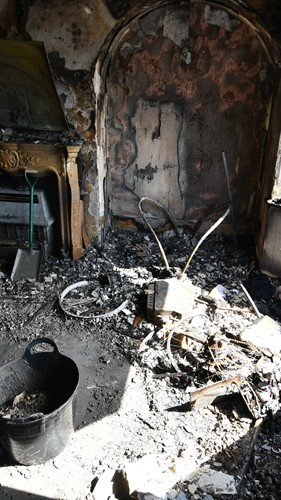E-bikes and e-scooters are becoming increasingly popular. Most are powered by lithium-ion batteries which can be charged in the home.
It is important to charge e-bikes and e-scooters safely to avoid a risk of a fire starting and putting your families and homes at risk.
CHARGING 
- Follow the manufacturer’s instructions when charging
- Ensure you have working smoke alarms. If possible, charge electric bike or scooter batteries somewhere outside of your home, eg external garage
- If charging in the home, ensure smoke alarms are fitted, working and are regularly tested
- Charge batteries whilst you are awake and alert so if a fire should occur you can respond quickly. Don’t leave batteries to charge while you are asleep or away from the home
- If you do need to charge at home overnight - make sure ALL internal doors are closed
- Always use the manufacturer approved charger for the product, and if you spot any signs of wear and tear or damage buy an official replacement charger for your product from a reputable seller
- Do not charge batteries or store your e-bike or e-scooter near combustible or flammable materials
- Do not overcharge your battery – check the manufacturer’s instructions for charge times
- Do not overload socket outlets or use inappropriate extension leads
- In the event of an e-bike, e-scooter or lithium-ion battery fire – do not attempt to extinguish the fire. Get out, stay out, call 999
STORAGE
- Avoid storing or charging e-bikes and e-scooters on escape routes or in communal areas of a multi-occupied building. If there’s a fire, vital escape routes may be blocked
- Store e-bikes and e-scooters and their batteries in a cool place. Avoid storing them in excessively hot or cold areas
- Follow manufacturer’s instructions for the storage and maintenance of lithium-ion batteries
BUYING
- Buy e-bikes, e-scooters and chargers and batteries from reputable retailers
- Many fires involve counterfeit electrical goods. Items which don’t meet British or European standards pose a huge fire risk and while genuine chargers (or battery packs) may cost more, it’s not worth putting the risk by buying a fake charger to save a few pounds
- Register your product with the manufacturer to validate any warranties – batteries are usually included in warranties. Registering makes it easier for manufacturers to contact you in the event of safety or recall information
- Check any products you have bought are not subject to a product recall. You can do this by checking Electrical Safety First’s website
DAMAGE AND DISPOSAL
- Batteries can be damaged by dropping them or crashing e-bikes or e-scooters
- Where the battery is damaged, it can overheat and catch fire without warning. Check your battery regularly for any signs of damage and if you suspect it is damaged it should be replaced and should not be used or charged
- If you need to dispose of a damaged or end of life battery, don’t dispose of it in your household waste or normal recycling. These batteries, when punctured or crushed can cause fires in bin lorries, recycling and waste centres. Your e-bike or e-scooter manufacturer may offer a recycling service.
